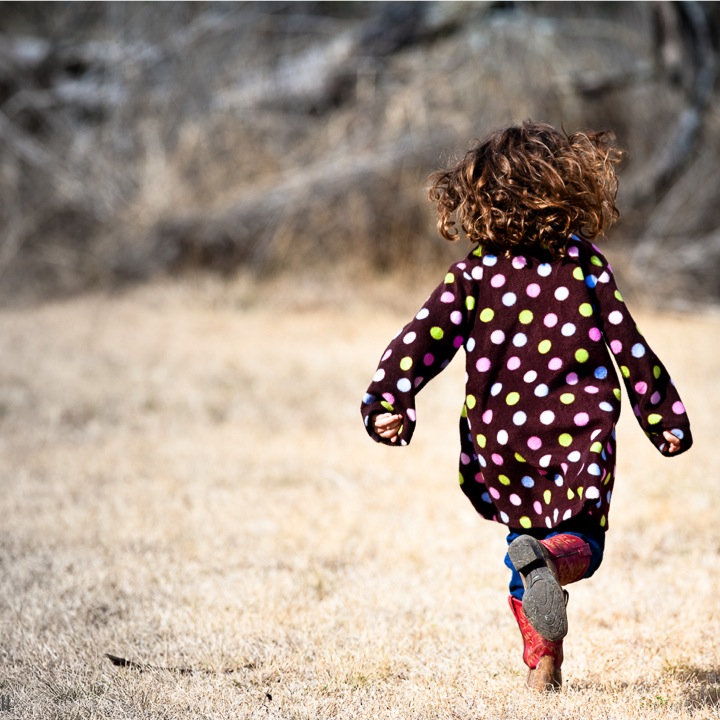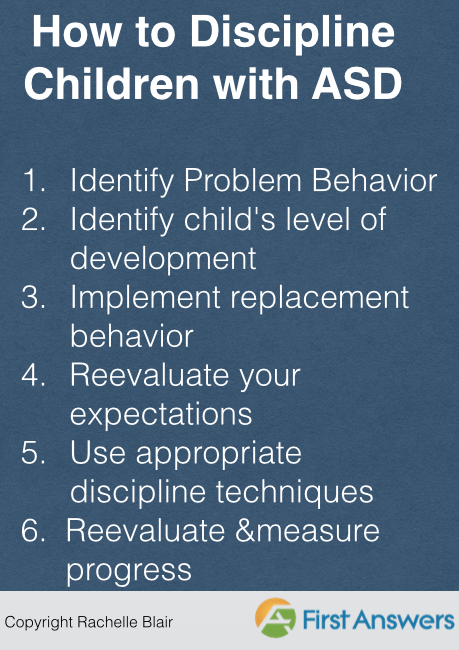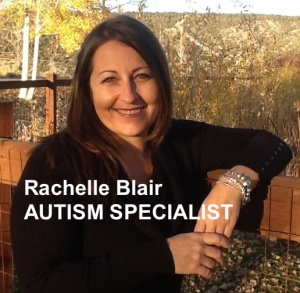Is it OK to discipline my child with Autism?

The most common question about autism I'm asked by parents is,
“Is it OK to discipline my child with Autism?”
The answer: YES!!
First, we need to understand that "discipline" does not always mean "punish." Discipline means to train or redirect toward appropriate behavior. We must discipline our children in order to change behaviors! This process of changing behavior teaches a child, and a child's life is consumed with learning. It's what they want. Children want to learn and get better.
Behavior may be understood as a way of communicating and is a sign of development! Our child’s changing behavior provides us with critical insight regarding the child’s preferences, desires, hopes, dreams, stresses, fears, anxieties, and priorities. Exploratory behavior drives communication! As we consider the behaviors of a young child we realize that most of them could be labeled as a problem! As they explore their environment, they leave a trail of disaster behind them.
Determining if a “Behavior” is a “Problem” is completely up to you and subjective. Yep, your idea of what is a problem is different than your neighbor's. Toddlers learn to propel objects! How wonderful, they have learned how to throw a ball! How terrible, they are throwing everything including the food while they sit in the highchair! They practice, practice, practice, until they master the skill. So as a parent, you provide them with an appropriate place to practice. This transition from inappropriate to appropriate is a replacement behavior. It allows the child to practice what they are developing in a more appropriate and structured context or location. You do not consider throwing a “problem behavior” when it is done in the appropriate place with the appropriate item. So you apply a structured replacement behavior by letting them throw a certain ball up and down the stairs, or by allowing them to throw mismatched, balled socks into a laundry basket in the corner. Regardless of what it is, you understand that by providing them an appropriate place to practice the behavior, it changes from a problem to acceptable. At times, it may seem like a double-edged sword, because the more you help them practice, the more they do it! But you want them to practice–it's how they learn and grow and eventually talk about the experience. And the more you help them practice in the appropriate way, they more likely they are to do on their own in the future.
If your child has autism, however, realize that although your child’s development may be delayed, it will still occur! Your child with ASD may be throwing
everything at a later age, when they are bigger, and this can be more damaging and difficult! However, it is still developmentally critical that they acquire the skill for later because it is related to hand writing, using scissors and silverware, and reading. Developmental skills build upon each other, and these foundational skills are critical for children to practice and learn for future skills. You still need to discipline according to their development and allow them to practice, practice, practice! Here is an example of this model of disciplining. Children need to run. However, we don't let them run free when we are in a parking lot. We discipline, or explain that "we can't run in a parking lot because cars can't see small children, and a child could get hurt." So we teach them to hold our hand in the parking lot as walk to the store. Eventually, children will better self-manage their impulse to run in the parking lot and may even wait with their hand ready to hold yours.
When infants begin to walk, we encourage them to do so because we understand the importance of practice. However, we would never allow them to practice walking in the street. So, walking in the street for a toddler is off limits. However, as they age and begin to explore (which is critical for complex communication to occur) the world, they may attempt to run into the street. We abruptly pick them up and tell them “No!” and help them understand the road is Off Limits! They continue to grow and explore and as they reach new levels of development, we match the new skills with new expectations. Over time, our expectations change according to new skills. We teach children replacement behaviors when crossing the street to help them understand boundaries and to allow them to practice. For example, they learn to hold our hand to cross the street. Then they are allowed to cross the street as we watch them. And eventually, they learn to cross the street on their own, and we are no longer concerned as parents. One replacement behavior at a time, we teach them over a process of years to cross the street safely on their own.
Although the process may take longer with your child with ASD, the process is the same. When the child acquires a desire to explore his environment, an evolution of new skills (A.K.A. “Problem Behavior” when performed in undesired times or environments) emerge, requiring your discipline–or new direction. As a parent, you match those behaviors with new expectations, replacement behaviors, and appropriate discipline. When your child learns to say or sign “No” you can begin to use “No”. Your child wants you to disciple them. It will teach them new skills critical for development. Disciplining children helps them learn and refine new skills. When children better understand and perform appropriately within boundaries, they become more confident in themselves, because they've learned what to do. This new knowledge is empowering for them.
Keys:
- Identify the specific behavior and if it is really a “problem behavior” [or a behavior at the wrong time/place.]
- Identify your child’s Developmental Level (Cognitive, Language, Gross Motor, Fine Motor, Social, and Self-Help)
- Prevent the problem behavior by identifying replacement behaviors that can be implemented, practiced, and praised!
- Re-evaluate YOUR expectations and redirect the child to the replacement behavior when needed.
- Implement developmentally appropriate discipline techniques.
- Re-evaluate the specific problem behavior of the child for progress.
Below is an example of these steps being used with a very common behavior issue with children with autism.
How to Discipline Young Autism Children Who Run Off
- Identify if it Is a Problem Behavior?
Running away from parents–yes, it is a problem behavior and needs to be corrected. - Identify child's developmental level
If they are able to walk and run, interested in exploring, can understand simple directions, imitate some physical gestures, enjoy socializing with parents–they are able to start to understand simple directions or correction in behavior. - Implement replacement behavior
Replacement behaviors are what you want the child to do: stop, hold hands with the parent, walk with the parents, etc.. Play stop and go games in the house to learn how to stop. Practice holding hands to walk instead of carrying the child or holding the child's wrist. Practice these activities in a fun way in the home first and praise the child for correctly responding to instructions: "stop," "holding hands," or "walking feet". By repeating these instructions and using praise, the child understands what is expected of them and that you like it! This also allows you to practice in a more safe, controlled environment before a "live" test. And you do need to practice in real settings–stores, social areas, for example–so the child can adapt to the necessary areas. - Reevaluate your expectations
Expect your child to walk in specific areas of the house. When they don't, give them assistance to do what you are asking, and give praise when done correctly. - Use appropriate discipline techniques
Redirect the child–with guidance, support, and your modeled behavior–to walk. Appropriate discipline can often be characterized as "something better or more appropriate you teach the child." So if they run, you teach them to walk or hold hands, for example. - Reevaluate and measure progress
After the child practices with consistency, evaluate if running is still a problem by having the child walk with you outside and eventually in the store, or areas that were previous problem areas.
Early intervention with autism is essential. View this autism checklist to better determine if your child is on the autism spectrum. If you think your child is on the spectrum, seek assistance immediately. If your child does not have autism, great. If he/she does, the sooner you start learning how to help your child, the better the results will be.
To learn more about how and when to discipline young children with autism, click here.
 Guest Blog by Autism Specialist, Rachelle Blair. Rachelle has helped parents adjust and find balance with autism in their families for more than 20 years. She has worked in both the private and public sector. She currently is a licensed early intervention autism specialist for the Jordan School District, Utah. She frequently presents and trains teachers on autism, and she is an independently contracted consultant focusing on the most effective in-home autism strategies for parents. Rachelle is the author of the online course: How to Discipline Children With Autism.
Guest Blog by Autism Specialist, Rachelle Blair. Rachelle has helped parents adjust and find balance with autism in their families for more than 20 years. She has worked in both the private and public sector. She currently is a licensed early intervention autism specialist for the Jordan School District, Utah. She frequently presents and trains teachers on autism, and she is an independently contracted consultant focusing on the most effective in-home autism strategies for parents. Rachelle is the author of the online course: How to Discipline Children With Autism.
 RSS Feed
RSS Feed